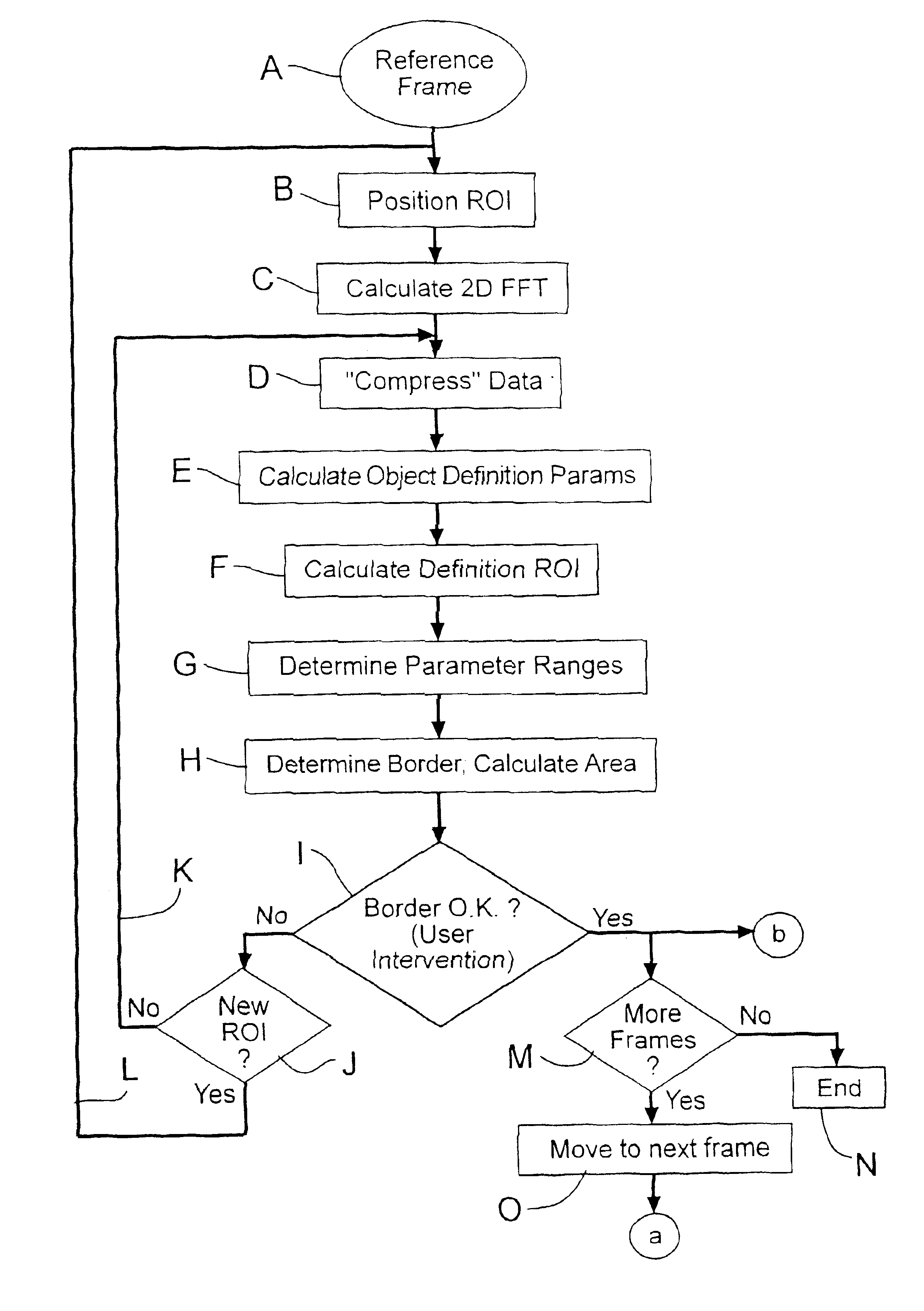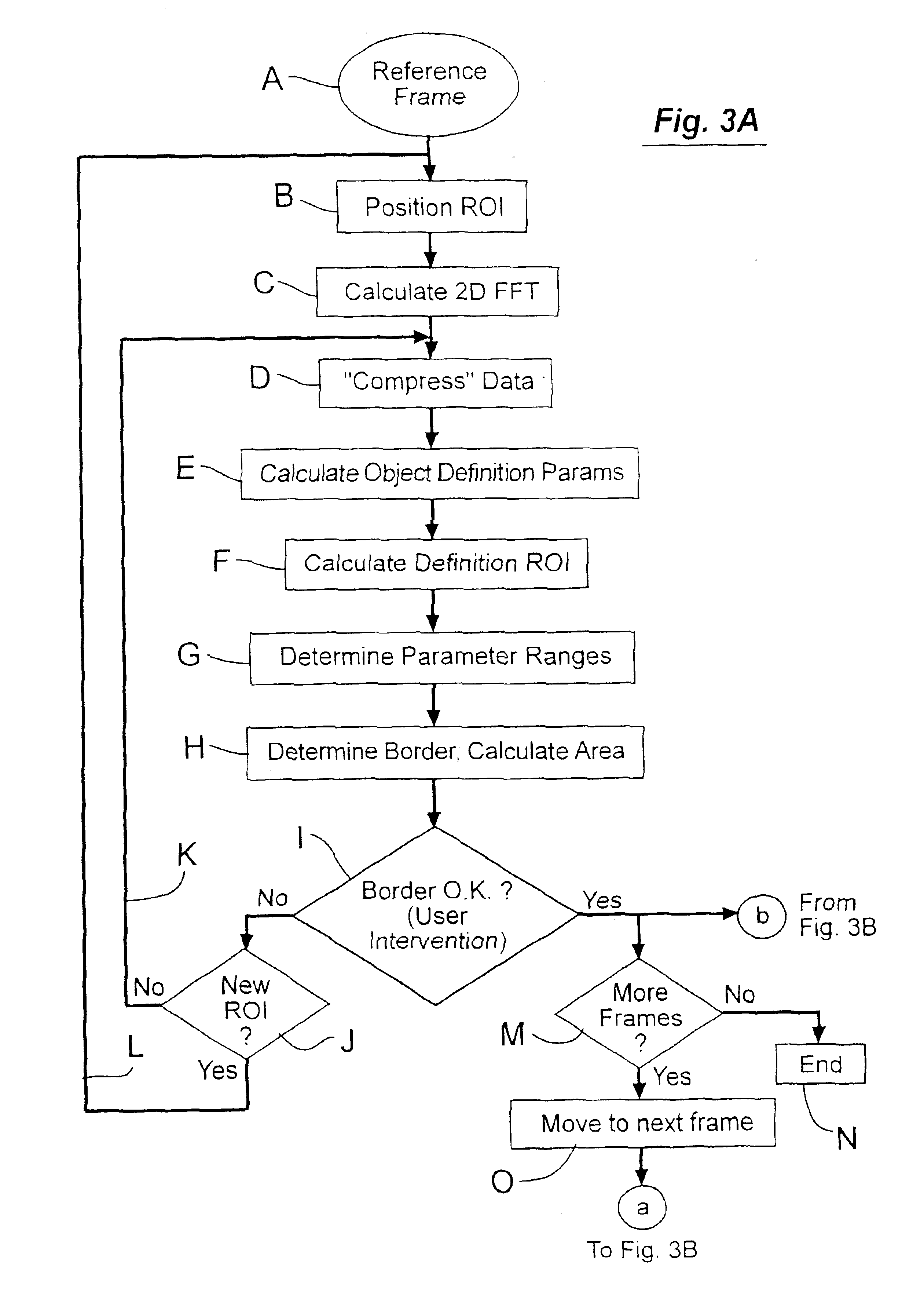Systems and methods for evaluating objects with an ultrasound image
an object evaluation and ultrasound technology, applied in the field of automatic characterization and identification of objects, can solve the problems of limited approaches, computational and time-consuming algorithms in cross-sectional area computation, and few automated approaches in the field of in-vivo ultrasonic object definition and identification
- Summary
- Abstract
- Description
- Claims
- Application Information
AI Technical Summary
Benefits of technology
Problems solved by technology
Method used
Image
Examples
Embodiment Construction
[0027]The invention provides exemplary systems and methods for evaluating objects within ultrasonic images. The objects to be evaluated are preferably representative of various physical features within the anatomy. Merely by way of example, such features may include tissue, plaque, blood, and the like.
[0028]The invention is particularly useful in constructing a border around the object so that the area of the object may easily be calculated. Importantly, the invention is also useful in that it is able to model the object using parameters which are representative of various physical characteristics of the object. These parameters are obtained from in-vivo image data. As one example, if the physical object is constructed at least partially from plaque, the parameters produced by the invention convey information on the nature of the plaque, e.g. its hardness, homogeneity, and the like. In this way, the parameters may be used to more appropriately define a proscribed treatment. Further,...
PUM
 Login to View More
Login to View More Abstract
Description
Claims
Application Information
 Login to View More
Login to View More - R&D
- Intellectual Property
- Life Sciences
- Materials
- Tech Scout
- Unparalleled Data Quality
- Higher Quality Content
- 60% Fewer Hallucinations
Browse by: Latest US Patents, China's latest patents, Technical Efficacy Thesaurus, Application Domain, Technology Topic, Popular Technical Reports.
© 2025 PatSnap. All rights reserved.Legal|Privacy policy|Modern Slavery Act Transparency Statement|Sitemap|About US| Contact US: help@patsnap.com



